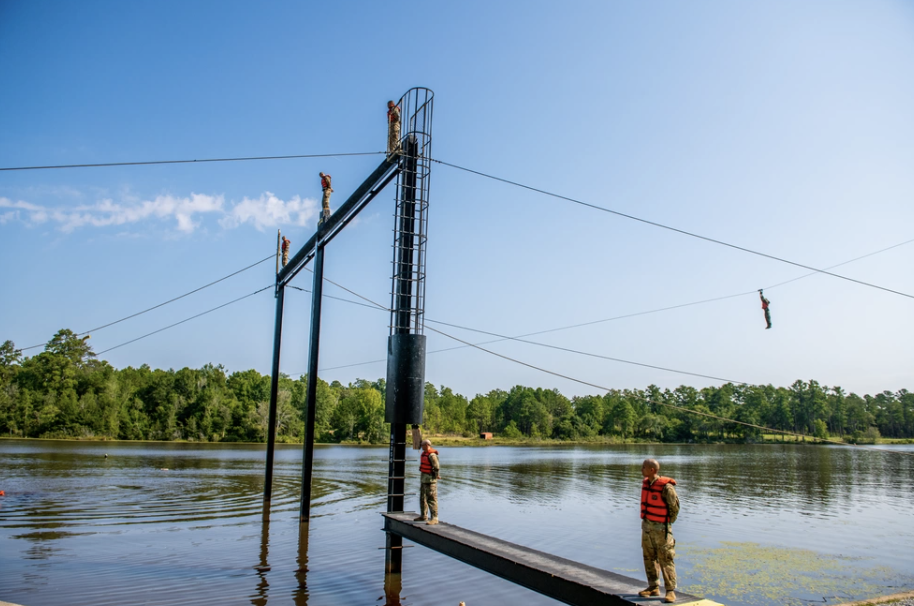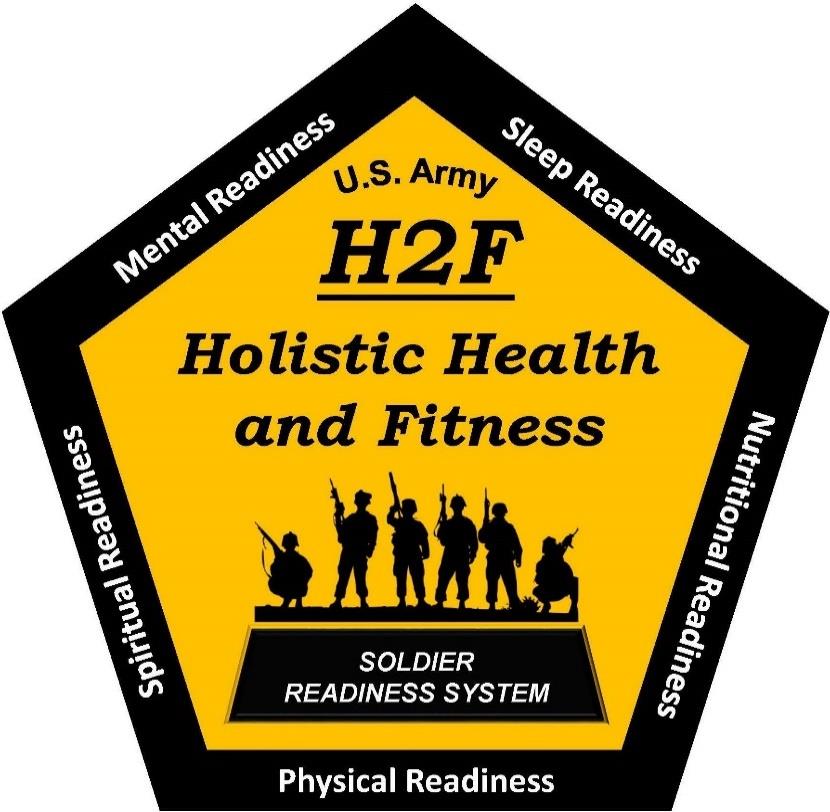Summer 2023
Exposure Events

“Man… I’m going to fall,” I thought to myself over and over again as I stood at parade rest on the wooden beam 30 meters above Victory Pond.
Sensory overload doesn’t do it justice. My legs are quivering and feel like Jell-O from the run to Victory Pond from Camp Rogers. Of course, it wasn’t just a run. It was a run with plenty of smoke sessions mixed in. Y-squat holds, buddy carries, and lunges are just a few examples of exercises we did during those smoke sessions. It was a little windy and I felt my leg and core muscles shakily attempt to steady my balance on the beam. I’m not paralyzingly afraid of heights, but I don’t particularly enjoy them either.
My eyes are focused everywhere, but nowhere. I can see the water below me in my peripheral vision but know better than to focus down there too much. I force my face into a façade of confidence trying to convey outwardly to the Ranger Instructors (RIs) that I’m not a soft target. I’m unbreakable. Inwardly, I know that’s a lie. The beam sways in the wind and it bounces as other Ranger students in front of me and behind me climb the ladder and walk along the beam.
I force my mind to stay on task. I remind myself of the training I’ve done to get here—hours spent with a heavy ruck early in the morning, in the pool, on the track, in the gym, studying. I’m in the Best Ranger Competition (BRC) class of the U.S. Army Ranger School. This means that if I recycle at all, I’ll have to wait six-to-eight weeks until I get to continue with another class, instead of the normal one-week recycling. Only about 20% of Ranger students go “62 and through” with no recycling, according to a 2015 NPR article by Laura Wagner.
This isn’t an option for me, though. My wife is pregnant with our third son and will be delivering him while I’m in Mountain Phase. A recycle means she is stuck being a single mom for even longer and I’m stuck without meeting my baby boy. “Burn the boats,” I remind myself. It’s the mantra I’ve repeated to myself in training. Going home without my tab isn’t an option. I remember to breathe. I use a psychological sigh: deep inhale, second inhale for even more air, then slow exhale through my mouth that takes about twice as long as the inhale did. I continue to do this while I focus on keeping my core engaged and knees slightly bent to fight the swaying beam and wind in order to maintain my balance. I’m stressed to the max.

Inwardly, I’m a ball of nerves. Outwardly, though, I’m Mr. Cool, Calm, and Collected. “Is that all you’ve got, Ranger School?”
I made it through that experience along with countless other terrifying and miserable experiences during my 62 days in Ranger School. There’s nothing special about me or the effort I put forth to accomplish this. I trained hard, went in with a game plan, executed that game plan, and utilized a variety of Human Performance Optimization (HPO) tools and techniques that are the bread and butter of what I do as a Mental Readiness Director on the Holistic Health and Fitness (H2F) team in the U.S. Army. I’m an Active-Duty Army Occupational Therapist and my primary areas of expertise on the H2F team are Mental or Cognitive Readiness and Sleep.
How do you prepare for an experience like Ranger School, specifically in the Mental and Sleep Readiness domains? I was under enormous stress the entire time and during an FTX got anywhere from 15 minutes to three hours of sleep on an average night for two months of my life. As tactical professionals, what do we have to offer our athletes that are going into these experiences? I believe that regardless of your role within the tactical space you should be thinking about exposure.
Are you providing your athletes with sufficient exposure in order to be successful at whatever they set out to do? Think general and specific exposure. As tactical professionals, we need to provide them with adequate general and specific exposure to set them up for success. Our job is to provide them with opportunities to train as they fight.
Most of what we do is general exposure, meaning it’s not tailored to that individual athlete but would generally benefit most athletes we work with. Things like mindfulness, tactical breathing exercises, plyometrics, aerobic work, anaerobic work, and strength endurance workouts are all great for most if not all our athletes. It takes creativity and vulnerability on our part in order to tailor that general exposure to specific exposure, however. If you have an athlete that wants to try out for a selection or go to a course or school of some sort, then it is up to you to find out what is going to be required of them.

We owe it to our athletes to be creative and do the research required to offer the best service possible. Go to the school or the cadre and ask them if you can observe or even hop in and try some yourself. Once you have experienced it yourself, you can then go into your professional toolbox and match the best tool for the job. Then you can make an informed decision on prioritization within your programming.
» ALSO SEE: Using A.I. to implement training programs
My profession calls this activity analysis. It’s essentially breaking down an activity into parts while considering things like the environment or context it’s performed in and the person and their unique characteristics and skills they possess. During my Combat Water Survival Assessment (CWSA), I was able to utilize self-talk, concentration, and arousal control effectively because I had practiced using them in training and had the confidence in my training to keep cool and execute. Intellectually knowing how to use a tool like self-talk, guided imagery, or arousal control through a breathing technique will not help if you don’t practice it under similar conditions that you’ll face during your selection. I had hours of specific exposure at the obstacle course, at the pool, with a ruck on my back, and in the gym utilizing these mental performance tools that would set me up for success. I had plenty of general and specific exposure. Enough so that when I was 30m high over the water, I could rely on my preparation.
Physical and Mental Readiness are about more than numbers on a PT test. Are your athletes healthy? Are they confident? Are they mentally and physically resilient? Are they tough? Are they team players? How’s their sleep and recovery? Regardless of your position on a Human Performance team, these are all things that should be considered within your programming.



